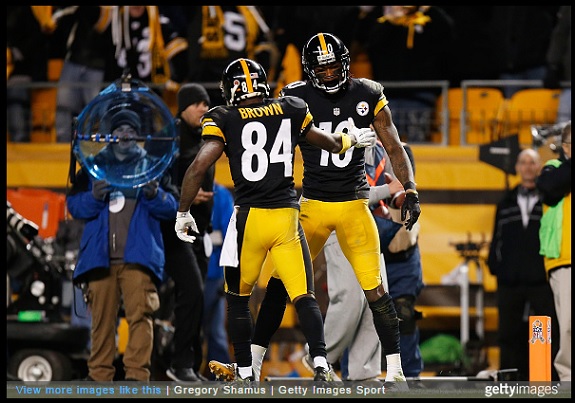The Pittsburgh Steelers spent much of the time between their last playoff victory and now replenishing their roster in preparation for their next chance to make a push for a championship. Last season showed signs that the team was on its way out of that transitional phase after posting a division-winning 11-5 record following back to back .500 seasons.
Still, the Steelers failed to make it out of the divisional round, and have lost their last three postseason contests, dating back to Super Bowl XLV. They followed up that 2010 run with a 12-4 wildcard campaign that saw a first-round exit, and subsequently failed to return to the playoffs the following two years.
So how close might they be to righting the ship and returning to that place that they have been more than any other franchise—that is, holding up the Lombardi Trophy? One way to attempt to measure that would be to compare how this season’s lineup projects against past teams.
For these purposes, it might be helpful to cite both the 2008 and 2010 teams, which are, respectively, the teams that have claimed their most recent Super Bowl championship and their most recent Super Bowl appearance.
Though he was already getting up there by the 2008 season, wide receiver Hines Ward was still the offense’s featured weapon in the passing game. He finished that season with more than respectable numbers, putting up 81 receptions for 1043 yards and seven touchdowns.
It was the emergence of the Steelers’ number two receiver that year, however, that would prove to be the difference, as Santonio Holmes began to get hot late in the year, catching three of his five touchdown passes in his last five games and adding another two in the postseason, which obviously includes the game-clinching touchdown grab in Super Bowl XLIII, during which he had nine receptions for 131 yards.
A former first-round draft pick, it was only a matter of time before Holmes would emerge as the featured guy, which came in 2009 when he posted his best season with the team, catching 79 passes for 1248 yards and five touchdowns.
The lines between the number one and number two were more blurry by 2010 as Ward was nearing the end of his career, but second-year Mike Wallace had emerged. He posted fabulous numbers that season, averaging 21 yards on 60 receptions for 1257 yards and 10 receptions. In practice, he had become ‘the guy’.
On the Steelers’ current roster, however, ‘the guy’ is clearly established as Antonio Brown, who was a rookie in 2010. He has proceeded to re-write the team’s record books over the course of the past two seasons, and it appears that for the fourth consecutive season he will have a different receiver as the primary starter opposite him.
Second-year receiver Martavis Bryant is expected to seize the starting job this year after his impressive rookie campaign, which was delayed until seven games into the season. But he led all qualified receivers with 21.1 yards per reception, catching 26 passes for 549 yards and eight touchdowns.
He was also impressive in the Steelers’ postseason loss, being the only player on the team to score, and he has gotten rave reviews this offseason not only for his performance, but for his commitment to improvement, including bulking up.
He may not quite have Wallace’s speed, but at 6’4”, he presents a challenge that the one-trick pony never did, and figures to have a more all-around game. If Bryant can rise to expectations, then he may be the Steelers’ best number two in the modern era Super Bowl contenders.








